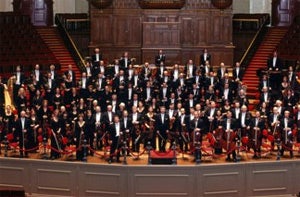Prom 62: Royal Concertgebouw Orchestra/ Jansons, Royal Albert Hall, London

If you thought that you’d have to wait until Shostakovich’s 10th Symphony for the real drama of this second Royal Concertgebouw concert to materialise then you’d be wrong.
Mariss Jansons sprang one or two hugely theatrical surprises in Haydn’s Symphony No.100 in G, “Military” – indeed in so many ways it was the more startling of the two performances.
Startling certainly describes the jaunty first subject deliciously pointed here in the dazzling alliance of the Royal Concertgebouw’s first oboe and flute. And what about the unexpected key change of the development duly heightened by the equally unexpected general pause before it: Jansons’ timing really made it tell. But then came the celebrated and once shocking Allegretto where a seemingly innocuous minuet turns military march mit percussion and an offstage trumpet foreshadowing the opening of Mahler’s 5th Symphony says let battle commence.
Notwithstanding this brief “fracas” Jansons presided over the kind of performance that had pedigree and elegance written all over it and if you thought that when the percussion left the stage at the end of the second movement that they were headed straight for the bar then you’d clearly have forgotten that they re-emerge for the celebratory pay-off but – and this was the biggest surprise of all – in strict procession across the front of the platform replete now with Turkish Crescent or “Jingling Johnny”. “Papa” Haydn would undoubtedly have approved: his “Surprise” Symphony was never so surprising.
And so to the Shostakovich – grave, majestic, and eminently symphonic. Shape and purpose are Jansons hallmarks and in terms of brooding magnificence there was little to fault here. I think of emergence of three bassoons like old melancholic voices leading off the grinding first movement development; I think of the sad dance in two clarinets which tries in vain to lift spirits in the wake of its crushing climax or the spiky distracted waltz of the third movement which flaunts the composer’s musical monogram after the passing of Stalin.
But – and it’s a big but – was the end result ever angry or defiant enough? Was the ferocious second movement ever likely to wreak havoc at so deliberate a tempo? Were horns and trumpets ever really assertive enough? Even the rudely maniacal gallop from Lady Macbeth of Mtsenk, the second encore, felt somewhat tamed for public consumption, its rattling side drum and insane high-stopped trumpets barely breaking a sweat leave alone stripping paint from the walls.
Subscribe to Independent Premium to bookmark this article
Want to bookmark your favourite articles and stories to read or reference later? Start your Independent Premium subscription today.

Join our commenting forum
Join thought-provoking conversations, follow other Independent readers and see their replies